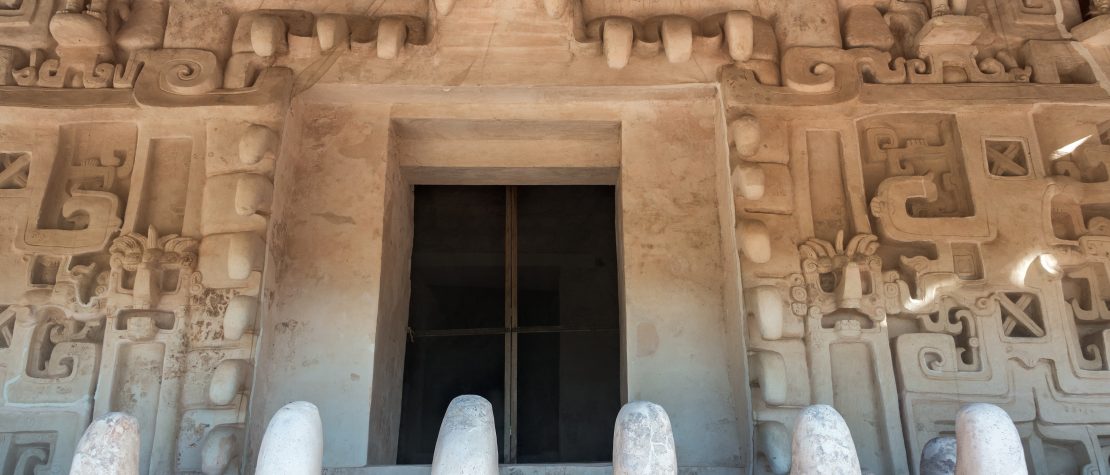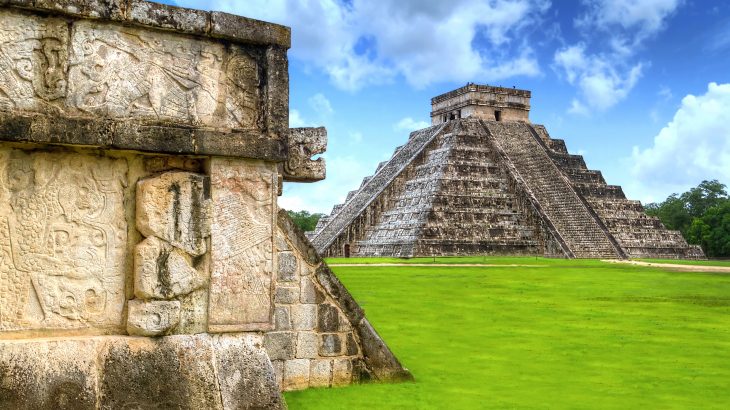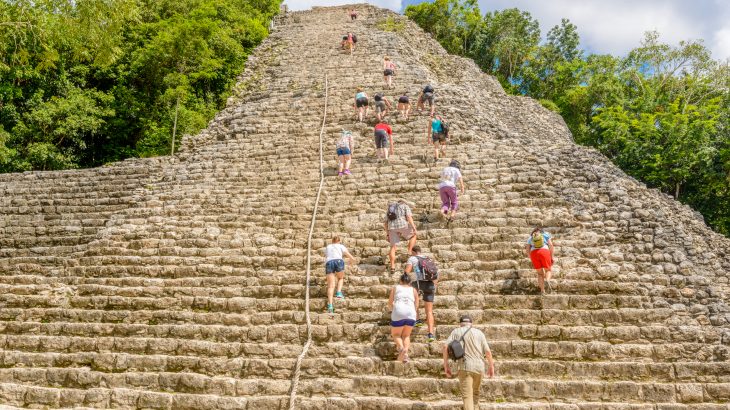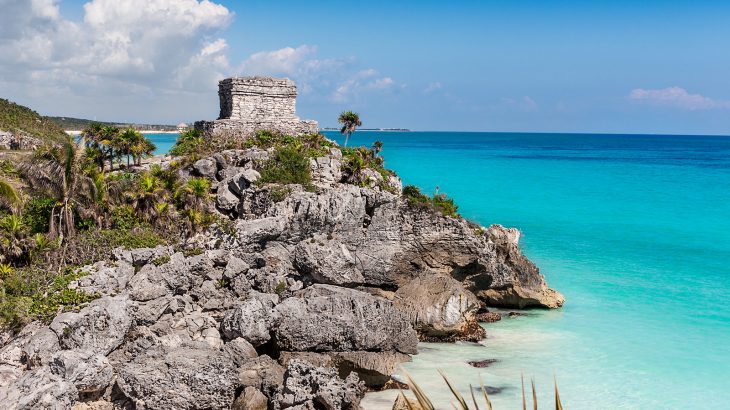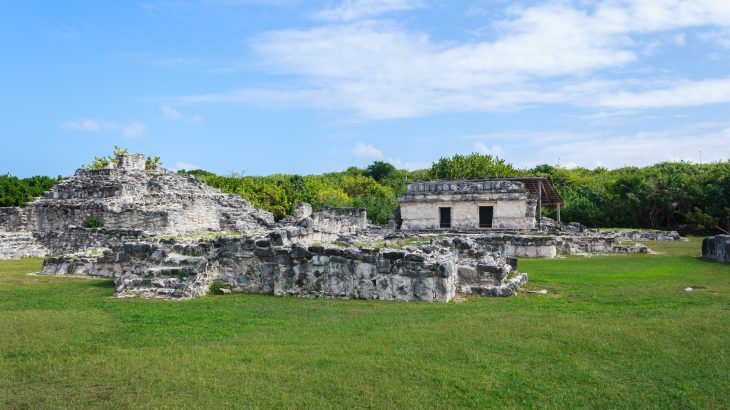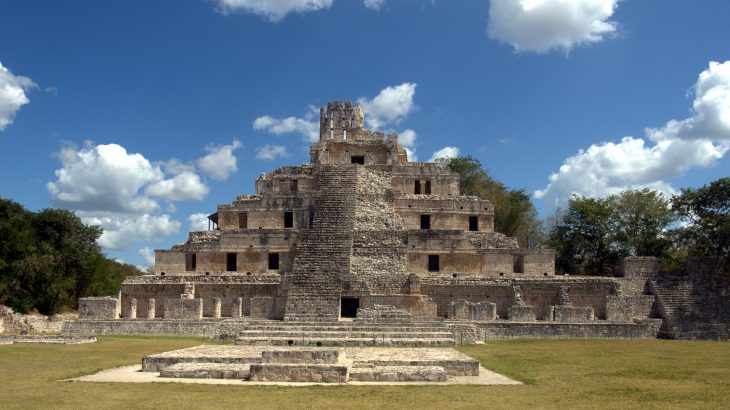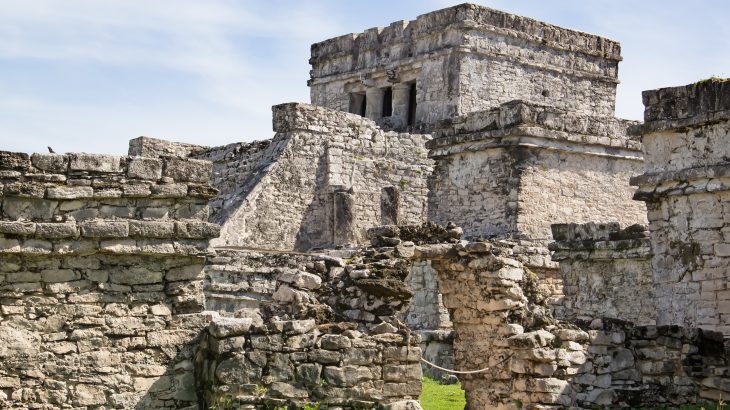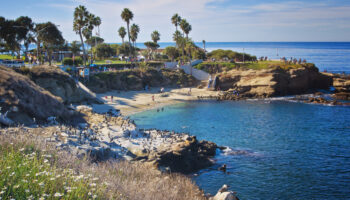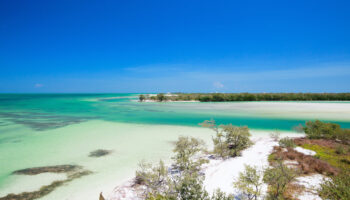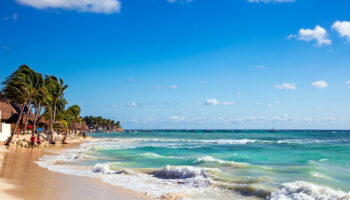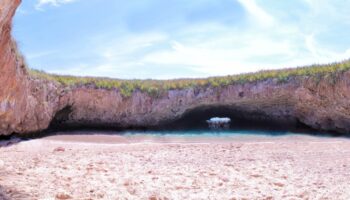Long before Cancún was a booming vacation destination, the Maya civilization inhabited the Yucatan Peninsula, which was once nothing more than wetlands, jungles and virgin beaches. The Mayan people named the region “Kan Kun,” meaning den of snakes. They built huge sculptures worshiping their gods on the land dating back to 1800 BC – all with ceremonial and sacrificial meaning.
By 900 AD, the Maya civilization had mysteriously fallen due to reasons no one can explain, although some historians point to exhaustion of the environment, constant warfare and environmental change. It wasn’t until the Spanish conquest in the 16th century, that the Spaniards moved in and renamed the area “Can Cun.”
The Mayan ruins are a must-see for any explorer awed by ancient civilizations and history, or simply, anyone who’s curious to see an epic man-made ancient site. Check out these six historically and culturally significant Mayan ruins in Cancún and start planning your trip back in time.
Chichén Itzá
One of the most popular Mayan attractions in Cancún, the Chichén Itzá and its well-preserved ruins are a must-see attraction. A UNESCO World Heritage site, the ruins at Chichén Itzá draw over a million visitors yearly to what was once one of the largest cities in the ancient world. Go and behold the Sacred Cenote, a once holy sinkhole where Mayan pilgrims would perform human sacrifices, and impressive structures like the Temple of Warriors and the almost 80-feet-high Kulkulan Pyramid—El Castillo—which was recently voted as one of the New Seven Wonders of the World.
Coba
Stoke your sense of discovery when you visit the Coba ruins. Make your way past the picturesque forest grounds that surrond this semi-secluded enclave and get ready to explore. Start at the site’s main pyramid then follow the sacbe (or white road) of your choosing to the many small, interconnected villages scattered around this mysterious ruin. This ruin is a bit harder to get to than most, but the sights (and relative lack of crowds) means it’s worth the trip.
Tulum
While day-long archaeological expeditions through ancient structures and days spent basking in Cancún’s coastal wonders are often mutually exclusive, Tulum offers a unique alternative with it’s waterfront ruins. Once a seaport used for trading jade and turquoise, the ruins dotting the beach in Tulum are perfect for a day of hiking, sightseeing and probing the mysteries of this once bustling port.
El Rey
If you’re not willing to devote an entire day to exploring Cancún’s Mayan ruins (maybe you have other, more relaxing, plans), the site at El Rey is perfect for a quick afternoon trip. Not much is known about these ruins, but they’re easy to reach for most travelers, and offer Instagram-friendly backdrops galore (you’ll likely catch a few of the iguanas that populate this spot).
Ek Balam
As in Chichén Itzá, you’ll find a tall pyramid on this site, along with a nearby cenote (the X’Canche Cenote to be exact)—believed to be once used for Mayan rituals and ceremonies. This ruin is overflowing with lush greenery, adding a rugged beauty ideal for those one-of-a-kind vacation photo ops.
Xel-Ha
Historians believe that Xel-Ha was once used as a port for Mayan people making their way to sacred grounds and important rituals—meaning this is a spot with significant historical significance. Several surrounding cenotes and a nearby eco-park means visitors to this ruin should have a whole day’s worth of adventure ahead of them.
Tags: Cancún
